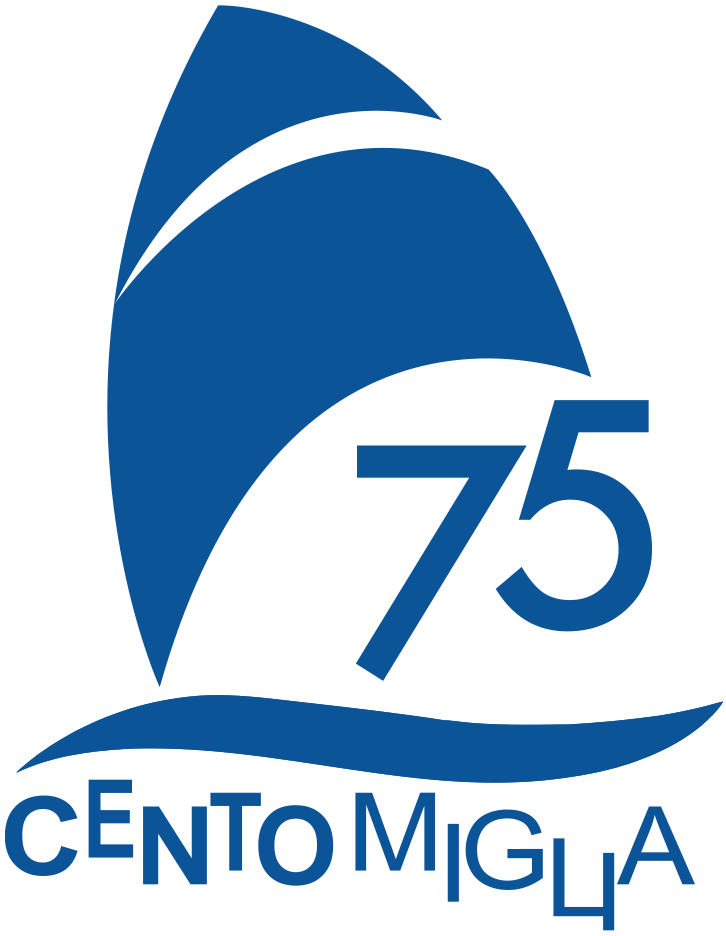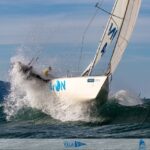Meet, on Garda’s lakefront, Giovanni Dusi, an engineer and writer of books that have been very successful.
Gulliver Junior, the protagonist of his most recent novel, is a solo sailor. Does this qualification – I ask him – reflect his passion for sailing?
In the culture especially Anglo-Saxon,” he replies, “there is a classic strand of even non-adventurous literature that tells seafaring stories. And the eternal urge to face the unknown: the departure is the moment when all possibility and hope opens up, while the return is the pacifying one of regained security. In between is the voyage, the discovery of unknown lands, the struggle with the elements, the challenge to the often hostile forces of nature, and that fabric of human relationships, complicated by isolation and remoteness, that are woven into life on board or in distant ports. One need only think of Stevenson, Conrad, and Melville. Mine, therefore, is more of a literary passion; Gulliver Junior, by the way, ends his sailing after a few pages, the victim of a shipwreck on an unsuspecting island where a peaceful and tolerant civilization takes place. A happy island, the realm of Utopia, but perhaps even boating responds to this desire for estrangement, for detachment from the many unsolved problems
We find ourselves experiencing on a daily basis.
However, however, you went and continue to go on the boat. Didn’t you participate in the first edition of the Centomiglia?
Yes, it was Piero Guarienti, who is still remembered on Garda as “Count Piero,” who proposed it to me. Besides the two of us the crew consisted of Almachiara Cometti and a Garda fisherman. Piero had an old 5.50 moving dinghy, the Barbara, made of wood of course and canvas sails. Any kind of boat could participate in the first Centomiglias; there were quite a few 5.50 dinghies then and so they formed a category. The other boats, moreover, were also all old, pre-war: it had to be a long time, in fact, before we could see the results of the new construction and design techniques, the fiberglass shells, the sophisticated equipment, not to mention those perfect racing machines that are today’s boats.
What do you remember about that first Centomiglia?
There was a more festive than competitive atmosphere. The route then was different: we la-skied Gargnano with 1′”ora, tacked to Malcesine again for Gargnano, went down through Maderno to Desenzano, returned through Sirmione, S. Vigilio, Torri and Gargnano. But on that day 1′”hour” was blowing sluggishly, so we all found ourselves in flats near Malcesine. Waiting for night breezes, we bathed, listened to music, chatted from boat to boat. Only after the Desenzano buoy, reached laboriously during the night, did we get into the thick of the competition. The “soar” was blowing vigorously, with dry waves flooding our drift. At dawn, toward St. Vigilius, we realized with surprise that we were leading in our category by a wide margin. After Torri we began a long tack toward Gargnano with the wind getting stronger and stronger, when a rigging blew and the mast snapped hard at the rigging. Thus ended my first Centomiglia.
That, however, was not the last…
No, a few years later I participated in two more editions of this regatta. I had a Lightning, a dinghy designed and very popular in the United States. Even on the Garda there were enough of them to form a category. The first year I won my class, much helped by luck. The course had lengthened to Torbole and Riva. A very strong “hour” soon put many boats in trouble; two Lightnings ahead of me by a few meters capsized almost at the same time, while I got away with cutting a sheet of the spi myself. We had just finished tidying up the boat and changing our soaked clothing, when a violent storm caught us off Riva. Various boats took refuge in the harbor, including a couple of our direct competitors. I believe there were only two or three Lightnings left in the race at that point. A stronger gust of wind tore all the luff slides along the mast rail from our mainsail. In the pouring rain we set about patching the slips to the sail, standing still for nearly an hour and finding ourselves decidedly ul
timers among the surviving boats.
But after sunset the boats ahead of us found themselves in the flat near Gargnano, and we, to our surprise and helped by weak landward breezes, managed to get back into the group. From that moment things got better, at Sirmione we took the lead in our category and came first in Gargnano preceding Cherubini’s Lightning, from the Torri club.
What about the following year?
The next year the result was reversed: Cherubini won and I was second. For me it was the last Centomiglia as a helmsman, although I participated in other editions of the regatta on friends’ boats.
The difference between then and now?
People used to race with less safe and faster boats, and with little preparation, while it is clear that certain current results can only be achieved with some measure of professionalism. The matter, however, personal-ly involves me little, for the same reason that, if I decided to watch a soccer game, I would prefer to see Garda against Bussolengo, rather than two major league teams. In the former case there is more enjoyment of the game, fun, and even irony; in the latter an exaggerated seriousness, disproportionate cost and waste. So with sailing, which interests me above all as a relaxing time, an active relationship with nature, exercise, a chance to get together with friends. It is clear, however, that competitiveness has greatly contributed to the spread of the sport of sailing, and this is important, not least because anyone who buys a sailboat is not buying a speedboat: and speedboats are ugly, consume hydrocarbons, pollute and break the soul; sails, on the other hand, are beautiful, silent, civilized, inflate with the wind, with one of our few natural and renewable sources of energy.
Piero Vantini



